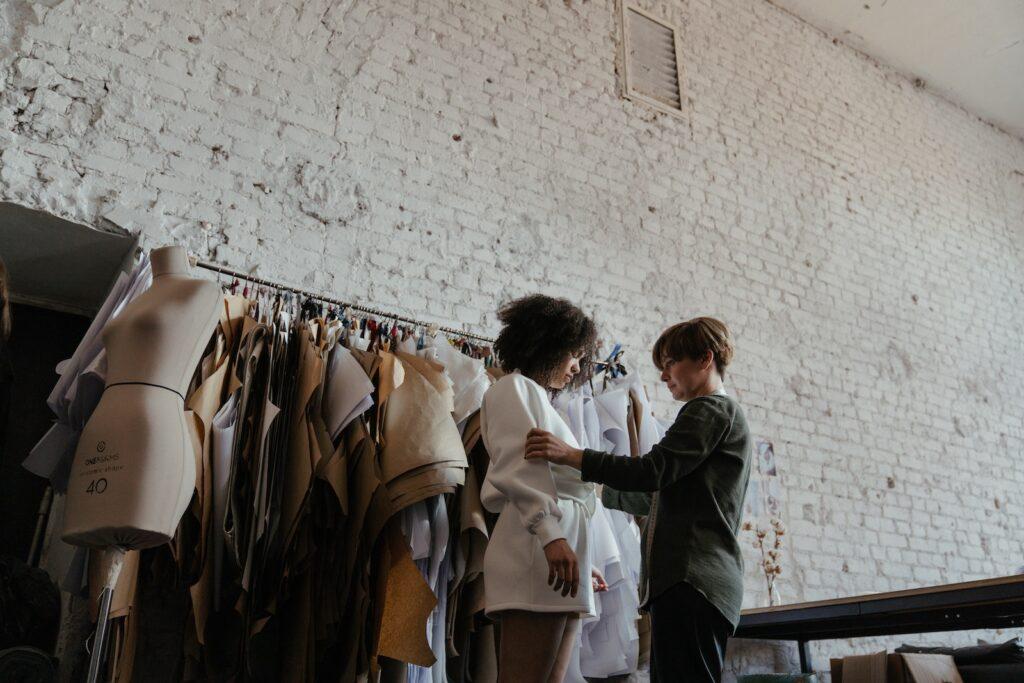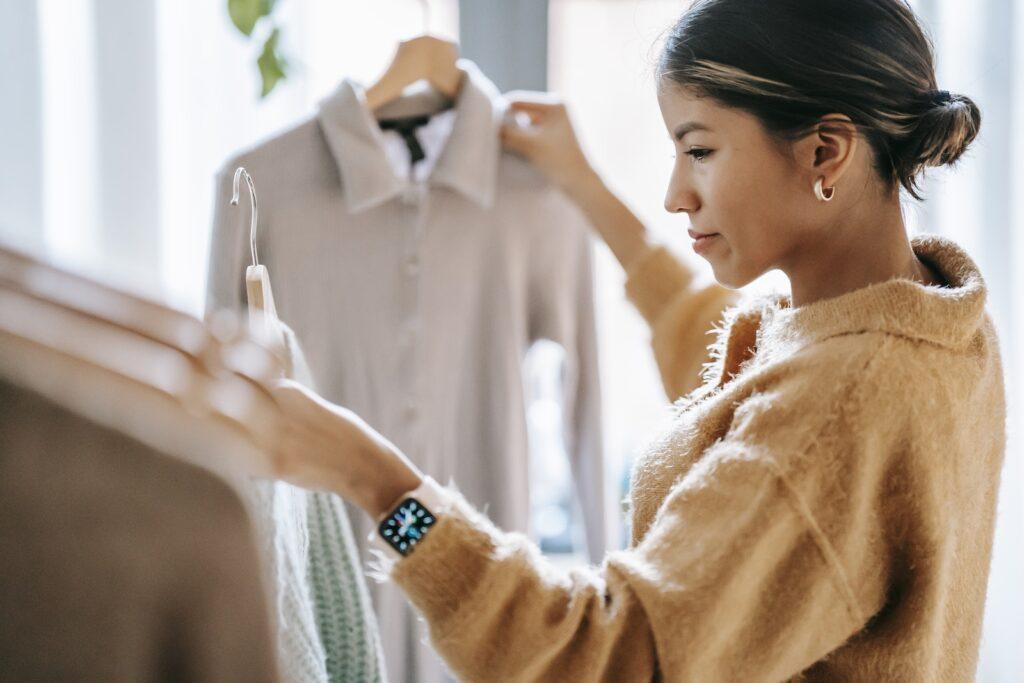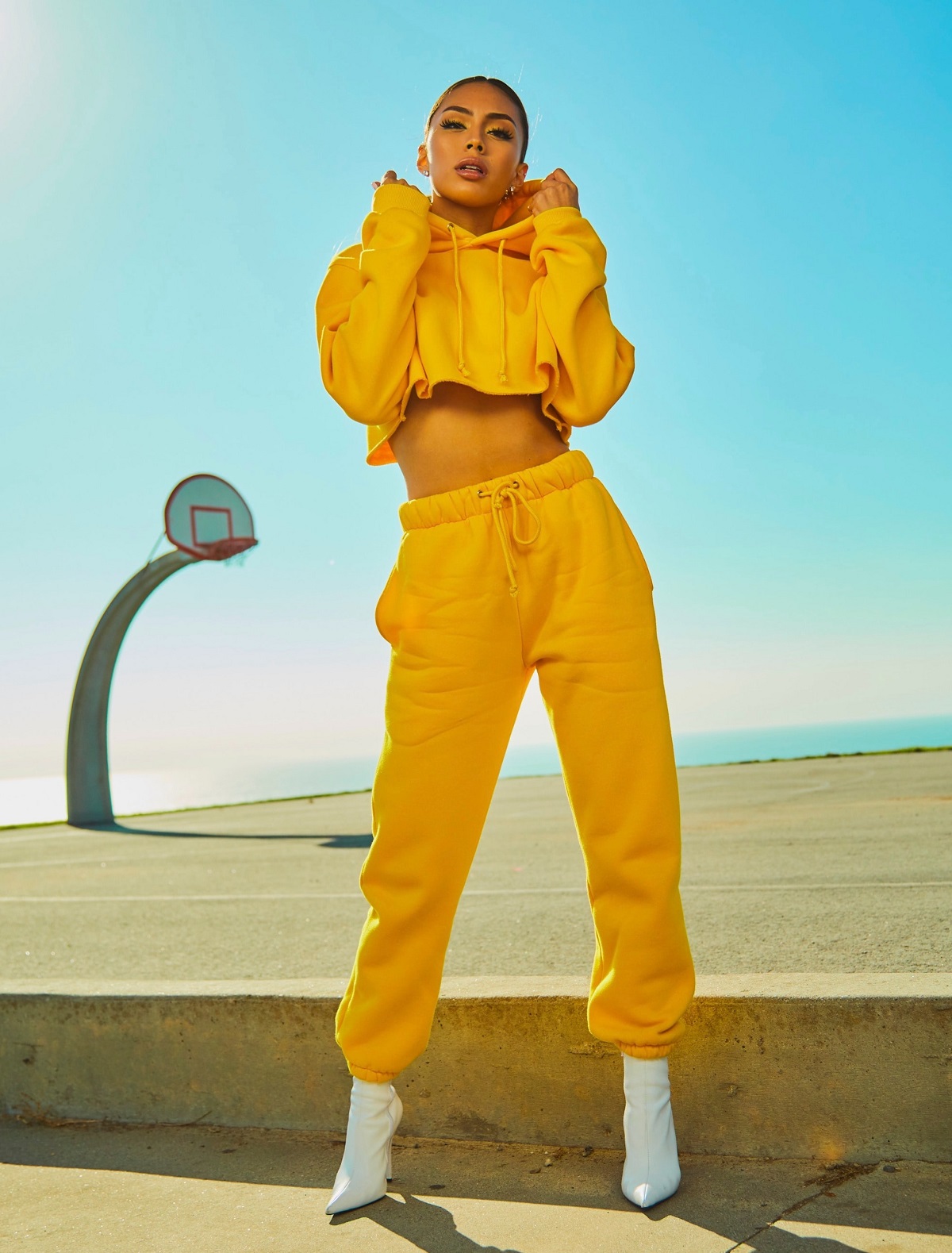In this article, what is a fashion designer, you will learn what it is to be a fashion designer, what fashion designers day to day and how much the average fashion designer makes.
Fashion design is an art form that combines creativity, aesthetics, and technical skills to create clothing and accessories. Fashion designers are the masterminds behind the latest trends and styles that grace the runways and fill our wardrobes.
They play a crucial role in shaping the fashion industry and have a deep understanding of fabrics, colors, patterns, and trends. In this article, we will explore the world of fashion designers, their role in the industry, the skills required to excel in this field, and more.
The Role of a Fashion Designer
Fashion designers are responsible for conceiving and creating designs for clothing, footwear, and accessories. They are involved in every step of the design process, from conceptualization to production. Their role goes beyond creating visually appealing garments; they also consider functionality, comfort, and marketability. A fashion designer’s work involves research, sketching, fabric selection, pattern making, garment construction, and overseeing the production process. Their ultimate goal is to create designs that resonate with consumers and meet their needs and desires.
Skills Required to Become a Fashion Designer
Becoming a successful fashion designer requires a diverse set of skills. Here are some of the key skills that aspiring designers need to cultivate:
- Creativity: Fashion designers must have a vivid imagination and the ability to think outside the box. They need to come up with innovative designs that captivate the audience and set trends.
- Drawing and Illustration: Strong drawing skills are essential for fashion designers to communicate their ideas visually. They need to sketch their designs, create technical drawings, and illustrate their vision.
- Knowledge of Fabrics and Materials: Understanding the characteristics of different fabrics, their drape, texture, and durability is crucial for creating well-designed garments. Fashion designers must stay updated with the latest fabric trends and innovations.
- Color Theory: Fashion designers must have a keen sense of color and understand how different hues and shades work together. They need to create harmonious color palettes that enhance their designs.
- Sewing and Pattern Making: Proficiency in sewing and pattern making is vital for translating design concepts into tangible garments. Fashion designers should have a solid understanding of garment construction techniques.
- Attention to Detail: A meticulous eye for detail is necessary to ensure that garments are flawlessly constructed and finished. Precision is key in creating high-quality designs.
- Trend Awareness: Fashion designers need to be aware of current and emerging fashion trends. They should stay updated on fashion shows, magazines, blogs, and social media platforms to gain inspiration and understand the market demand.
- Communication and Collaboration: Excellent communication skills are crucial for fashion designers to effectively convey their ideas and work with clients, manufacturers, and other professionals in the industry.
Educational Background and Training
While a formal education is not always mandatory to become a fashion designer, it can provide aspiring designers with a strong foundation and enhance their skills. Many fashion designers choose to pursue a degree in fashion design or a related field. These programs typically cover subjects such as design principles, textiles, pattern making, fashion history, and marketing.
Additionally, aspiring fashion designers can benefit from internships and apprenticeships, which provide practical experience and industry connections. Working under experienced designers allows them to learn firsthand about the industry’s intricacies and gain insights into the design process.
Fashion Design Specializations
Fashion design offers various specializations that cater to different aspects of the industry. Some common specializations include:
- Haute Couture: Haute couture designers create high-end, one-of-a-kind garments that are made-to-measure for individual clients. This specialization requires exceptional craftsmanship and attention to detail.
- Ready-to-Wear: Ready-to-wear designers focus on creating garments that are mass-produced and sold in retail stores. They design clothing that appeals to a broader consumer base while considering trends, market demand, and affordability.
- Accessory Design: Accessory designers specialize in creating fashion accessories such as handbags, shoes, belts, and jewelry. They collaborate with fashion designers to ensure that accessories complement the overall look and style of the garments.
- Costume Design: Costume designers work in the entertainment industry, designing costumes for films, theater productions, and television shows. They collaborate closely with directors, actors, and production teams to bring characters to life through clothing.
The Creative Process of a Fashion Designer
The creative process of a fashion designer is a multifaceted journey that involves several stages:
- Research: Fashion designers begin by researching current and historical fashion trends, art, culture, and consumer preferences. They gather inspiration from various sources such as museums, travel, nature, and social media.
- Concept Development: After thorough research, designers start developing their design concepts. They create mood boards, sketch ideas, and explore different silhouettes, color palettes, and fabric choices.
- Sketching: Once the design concepts take shape, fashion designers translate their ideas onto paper through sketches. These sketches serve as a visual representation of their designs and help communicate their vision to others.
- Fabric Selection: Fashion designers carefully choose fabrics that align with their design vision. They consider factors such as texture, weight, drape, and color compatibility. Fabric swatches are often used to visualize the combination of different materials.
- Pattern Making: Pattern making is the process of creating templates that serve as a blueprint for cutting and sewing fabric pieces. Fashion designers create patterns based on their designs and measurements, ensuring a proper fit.
- Garment Construction: Using the patterns as a guide, designers cut and sew the fabric pieces together to construct the garments. They pay attention to details such as seams, finishing techniques, and closures.
- Fittings and Adjustments: Once the garments are constructed, fashion designers conduct fittings to assess the fit and make necessary adjustments. This stage ensures that the final product meets the desired standards.
- Presentation and Marketing: Fashion designers showcase their designs through fashion shows, lookbooks, and marketing campaigns. They collaborate with stylists, photographers, and models to create captivating presentations that capture the essence of their designs.
Fashion Designers and Trends
Fashion designers have a significant influence on the trends that dominate the fashion industry. They forecast and create styles that resonate with consumers and shape the way people dress. Through their creative vision, designers introduce new silhouettes, color palettes, and patterns, setting the tone for each season. They often collaborate with fashion forecasters and trend analysts to stay ahead of the curve and anticipate consumer preferences.
Fashion designers draw inspiration from various sources, including art, culture, music, and street style. They blend these influences with their personal aesthetic to create unique designs that capture the zeitgeist. Their ability to predict and interpret trends is crucial in meeting consumer demands and staying relevant in a fast-paced industry.
Fashion Designer vs. Fashion Illustrator
While fashion designers and fashion illustrators are closely related, they have distinct roles within the industry. Fashion designers focus on creating original designs and overseeing the entire process of garment production. They are responsible for translating their ideas into tangible garments that can be worn by consumers.
On the other hand, fashion illustrators specialize in visual representation. They use their artistic skills to create illustrations that showcase fashion designs. Fashion illustrators often collaborate with designers to bring their concepts to life through captivating visuals. They may work on illustrations for lookbooks, fashion editorials, or advertising campaigns.
Fashion Designer Salary and Job Outlook
The salary of a fashion designer can vary depending on factors such as experience, specialization, location, and employer. According to the U.S. Bureau of Labor Statistics, the median annual wage for fashion designers was $75,810 in May 2020. However, it’s important to note that entry-level designers may earn significantly less, while established designers and those working for prestigious fashion houses can earn considerably more.
The job outlook for fashion designers is competitive, with a projected decline of 4 percent from 2019 to 2029. The industry’s high demand for creativity and innovation attracts many aspiring designers, resulting in intense competition for available positions. However, designers who demonstrate exceptional talent, a strong portfolio, and adaptability to changing market demands will have better prospects.
Fashion Designers and Sustainability
Sustainability has become a growing concern in the fashion industry, and fashion designers have a crucial role to play in promoting eco-friendly practices. Many designers are incorporating sustainable materials and production methods into their designs. They aim to reduce the industry’s environmental impact by using organic fabrics, upcycling materials, and minimizing waste.
Furthermore, some fashion designers are embracing slow fashion, focusing on creating timeless pieces that withstand trends and encourage conscious consumption. By advocating for ethical manufacturing, fair trade, and transparency, fashion designers contribute to a more sustainable and socially responsible industry.
FAQs Of What Is A Fashion Designer
1. What qualifications do you need to become a fashion designer?
To become a fashion designer, a formal education in fashion design or a related field is beneficial, but not always mandatory. Many designers pursue a degree to acquire fundamental skills and industry knowledge. Additionally, developing a strong portfolio and gaining practical experience through internships or apprenticeships can also enhance career prospects.
2. Can I become a fashion designer without a degree?
Yes, it is possible to become a fashion designer without a degree. Some designers have built successful careers through self-teaching, apprenticeships, or starting their own fashion labels. However, a degree can provide a structured learning environment, industry connections, and a broader understanding of design principles.
3. What is the difference between a fashion designer and a fashion stylist?
A fashion designer creates original designs for clothing, accessories, and footwear. They oversee the entire process of bringing their designs to life, from conception to production. On the other hand, a fashion stylist focuses on curating outfits and creating visually compelling looks. Stylists work with fashion designers’ creations, selecting and combining garments and accessories to create cohesive and impactful ensembles.
4. How long does it take to become a fashion designer?
The time required to become a fashion designer can vary depending on the educational path chosen and individual circumstances. A bachelor’s degree in fashion design typically takes four years to complete. However, it may take longer to gain practical experience, build a portfolio, and establish oneself in the industry.
5. What are some famous fashion designers?
There are numerous famous fashion designers who have made significant contributions to the industry. Some notable names include Coco Chanel, Christian Dior, Giorgio Armani, Karl Lagerfeld, Alexander McQueen, and Donatella Versace. These designers have left a lasting impact on fashion with their iconic designs and innovative approaches.
6. How do fashion designers stay inspired?
Fashion designers stay inspired by continuously exploring various sources of inspiration. They immerse themselves in art, travel, culture, nature, and everyday life. They attend fashion shows, visit museums, read fashion magazines and blogs, and engage with social media platforms to stay connected to the latest trends and ideas. Collaboration with other creative professionals also fosters fresh perspectives and sparks inspiration.
Conclusion
Fashion designers are the creative minds behind the clothing and accessories that shape the fashion industry. They possess a unique blend of artistic talent, technical skills, and industry knowledge. Through their creative vision and craftsmanship, they create designs that captivate consumers and drive trends. Fashion designers play a pivotal role in pushing the boundaries of fashion, embracing sustainability, and shaping the way we dress. Whether they’re designing for haute couture or ready-to-wear markets, their work contributes to the ever-evolving landscape of fashion.
So, if you have a passion for fashion, an eye for design, and a drive to create, pursuing a career as a fashion designer may be your path to success in this exciting and dynamic industry.













